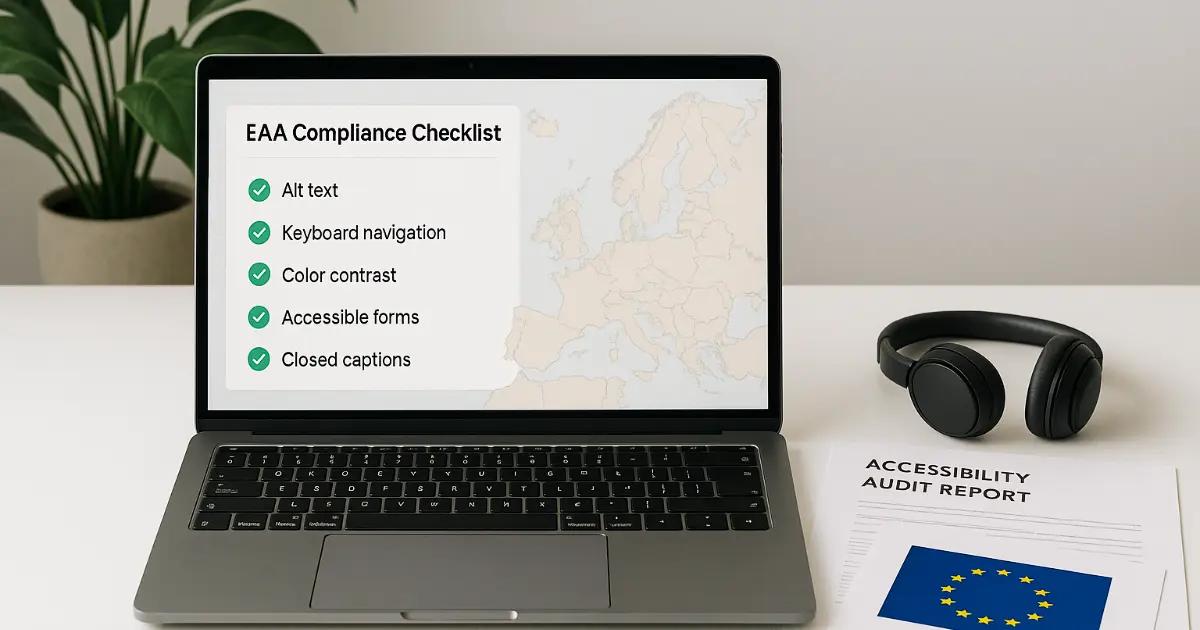Imagine trying to complete simple daily activities, such as ordering food delivery, but your screen goes completely dark, or attempting to pay a bill, but your phone stops responding to touch. For most of us, these scenarios would be temporary inconveniences, but for billions of people living with disabilities, these aren't hypothetical situations – they're daily challenges.
The numbers speak for themselves - globally, over 1.3 billion people live with some form of disability. In the European Union alone, about 87 million people have disabilities. These individuals navigate a digital world that often wasn't designed with their needs in mind.
One of the fields where the digital divide has become noticeable is telecommunications. The shift towards app-based services, making a simple phone call, checking data usage, or updating a service plan – actions that should be straightforward – can become frustrating when digital platforms aren't accessible.
Our case study aims to highlight this gap and offer actionable steps for companies that will create an inclusive space for anyone.
Understanding digital accessibility in telecommunications
Digital accessibility in telecommunications is not just about making websites work with screen readers; it includes the entire digital ecosystem that modern telecommunication companies provide, from mobile apps and customer portals to support services.
At its core, digital accessibility means ensuring that people with disabilities can perceive, understand, navigate, and interact with digital services just as any other user. The European Accessibility Act (EAA) sets specific requirements for telecommunications services, making it necessary that by June 28, 2025, companies must ensure their digital services are accessible to people with various disabilities. This includes:
- Making all user interfaces navigable by keyboard;
- Ensuring compatibility with screen readers and assistive technologies;
- Providing alternatives to text-based communication;
- Offering accessible documentation and support services;
- Ensuring emergency communications are accessible to all users.
For Baltic telecommunications providers, this timeline creates urgency. The 2025 deadline might seem distant, but implementing comprehensive accessibility solutions requires significant planning, development, and testing.
For more detailed insights and recommendations, read our comprehensive white paper: Digital Accessibility & EAA: Telecommunications Industry Under Review.
The current state of digital accessibility
We analyzed the biggest telecommunication providers in the Baltic region – Tele2, Bite, Telia, and LMT. After evaluating their digital platforms, customer service interfaces, and mobile applications, here are a few things we found:
- Variable compliance. While all providers show awareness of accessibility needs, implementation levels vary significantly. Telia leads with the most accessible digital platforms, having implemented early WCAG 2.1 compliance measures.
- Mobile app challenges. Most providers’ mobile apps show lower accessibility compliance compared to their websites, particularly in areas of screen reader compatibility and keyboard navigation.
- Documentation gaps. Digital documentation, including user manuals and support materials, often lacks accessible formats and proper structure for screen readers.
- Customer service innovation. Several providers have implemented innovative solutions, such as Tele2's video call service for sign language users and LMT's AI-powered chat support with accessibility features.

Accessibility challenges
Our analysis of the providers identified several areas requiring attention:
Perceivability issues
- Screen reader compatibility
- Inconsistent heading structures
- Missing alt text for images
- Unlabeled form fields
- Dynamic content updates not announced to screen readers
- Color contrast
- Text often fails to meet WCAG 2.1 contrast requirements
- Interactive elements lacking sufficient contrast
- Brand colors create accessibility barriers
- Media accessibility
- Video content without captions
- Absence of audio descriptions
- Complex images lacking detailed descriptions
Operability concerns
- Keyboard navigation
- Focus indicators missing or unclear
- Complex features inaccessible via keyboard
- Modal dialogs trapping keyboard focus
- Time limitations
- Session timeouts without proper warnings
- Insufficient time to complete forms
- Automatic content updates causing disruption
The importance of digital accessibility from a business perspective
The disability market represents $13 trillion in annual disposable income globally. So it's unfortunate that many businesses still treat accessibility as an afterthought when developing their digital solutions. Accessible design doesn't just benefit users with disabilities—it actually improves usability for everyone. So yes, companies ignoring accessibility standards aren't just missing out on a significant market segment, they're limiting their overall growth potential.
So what happens when companies prioritize digital accessibility? First, they gain a market advantage over other competitors. User experience improves significantly, leading to better customer retention—considering that in the UK alone, 70% of users with any form of disability abandon difficult-to-navigate websites. How does this impact the bottom line? Companies see reduced support costs through better self-service options, and their brand reputation increases.
Recommendations
Based on our analysis, we recommend the following approach for telecommunications providers:
- Immediate priorities (0-6 months)
- Conduct comprehensive accessibility audits
- Address critical WCAG 2.1 violations
- Implement basic screen reader compatibility
- Train customer service staff on accessibility features
- Medium-term goals (6-12 months)
- Develop accessible mobile applications
- Create accessible documentation standards
- Implement accessible payment systems
- Establish regular accessibility testing protocols
- Long-term strategy (12-24 months)
- Build accessibility into development workflows
- Create innovative accessibility solutions
- Establish accessibility centers of excellence
- Develop partnerships with disability organizations
Conclusion
Our analysis of digital accessibility in Baltic telecommunications shows both promising progress and clear room for improvement. While companies like Telia and Tele2 have implemented innovative accessibility features, significant work remains before the industry achieves full compliance with the European Accessibility Act (EAA).
The technology and knowledge needed to create accessible digital experiences already exist. What's required now is commitment and action from telecommunications companies to implement these solutions across their digital platforms.
Ready to create an inclusive digital space for all users? Contact us and learn more about our accessibility audits and testing services, and how we can help you make your platform accessible and your company EAA compliant.




